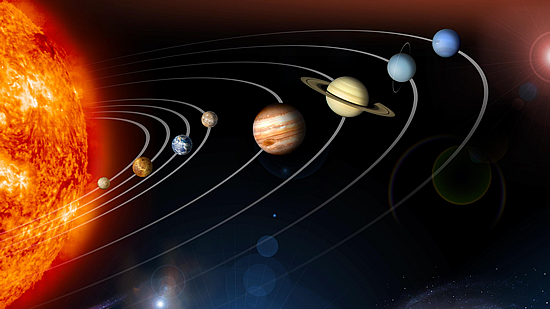GCSE level questions on the Earth in Space
Q15.

(a) Our solar system includes the Sun, planets and moons. It is part of a galaxy. What is the name of the galaxy our solar system is part of?
[1 mark]
(b) In our solar system, planets orbit the Sun. What force causes planets to orbit the Sun?
[1 mark]
(c) The table below shows data on five planets:
Planet |
Mean distance from the Sun /millions of kilometres |
Mean surface temperature/ °C |
Earth |
150 |
+22 |
Mars |
228 |
–48 |
Jupiter |
778 |
X |
Saturn |
1430 |
–178 |
Uranus |
2870 |
–200 |
(i) How does the mean surface temperature of the planets in the table change as the mean distance from the Sun increases?
[1 mark]
(ii) Predict the mean surface temperature of Jupiter - shown as X in the table.
[1 mark]
(iii) Five of the planets in the solar system are given in the table. How many other planets are there in the solar system?
[1 mark]
(d) Our Moon is a natural satellite.

(i) Tick one box to say why the Moon is classified as a satellite.
| It has no atmosphere. |
|
| It has no gravitational field. |
|
| It is too small to be a planet. |
|
| It orbits a planet. |
|
[1 mark]
(ii) Tick two boxes to indicate ways in which planets and moons are similar.
| Their mass is about the same. |
|
| Their orbits are elliptical. |
|
| Their surfaces are the same colour. |
|
| They are similar in diameter. |
|
| They do not emit visible light. |
|
[2 marks]
(e) The diameter of the Earth is 13,000 km.
The diameter of the Sun is 110 times greater than the diameter of the Earth. Calculate the diameter of the Sun in metres. Give the answer in standard form.
[3 marks]
(Total 11 marks)









